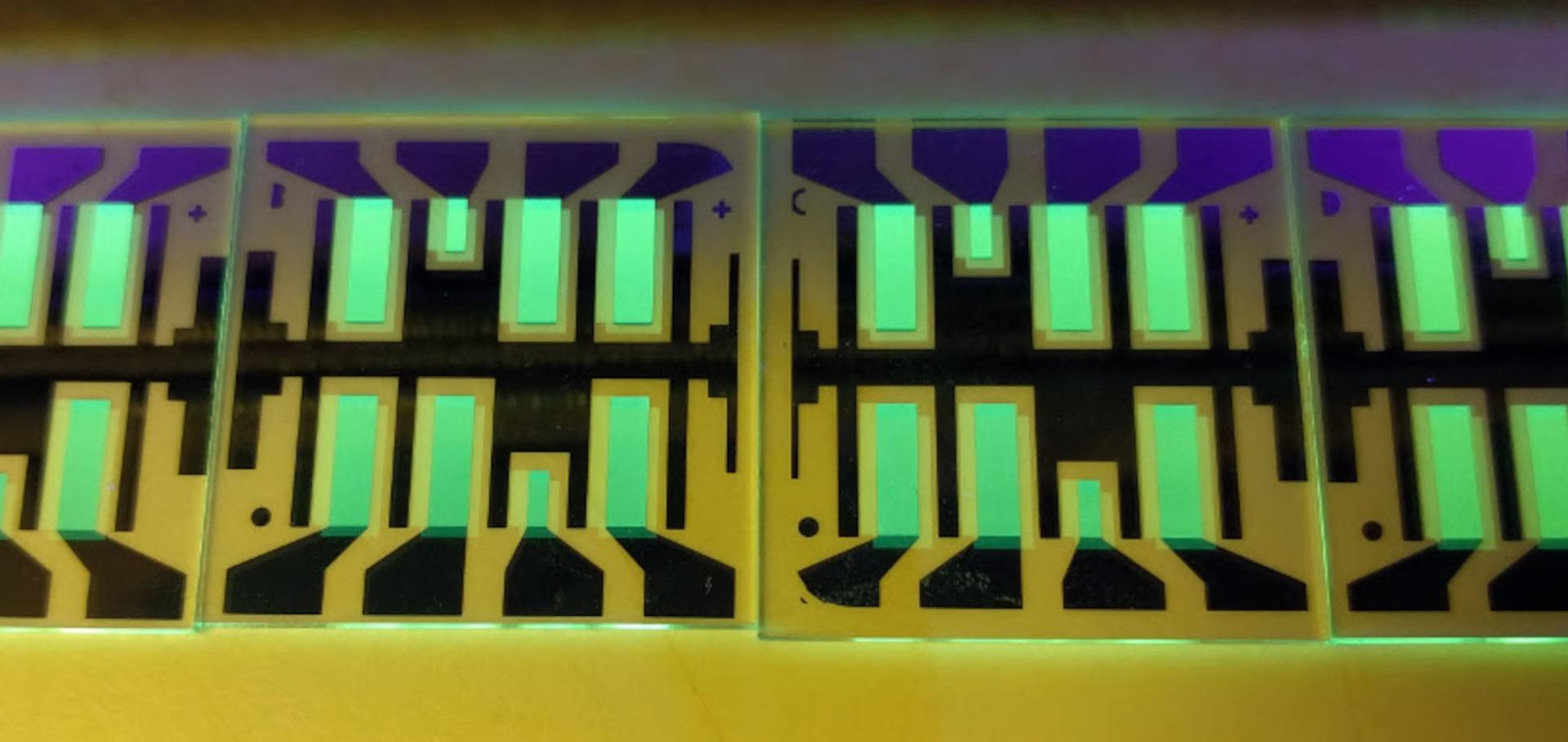Increase in internal quantum efficiency in small molecular oligothiophene: C60 mixed heterojunction solar cells by substrate heating
Applied Physics Letters 97:7 (2010)
Abstract:
We present small molecule solar cells with α,ω-bis- (dicyanovinylene)-sexithiophene: C60 mixed heterojunctions, reaching power conversion efficiencies of 4.9±0.2%. We use substrate heating during deposition of the mixed layer to achieve an optimized morphology and show that this significantly improves the internal quantum efficiencies (IQEs) to values approaching 70%. By optical modeling, we evaluate the amount of loss due to absorption in inactive layers and show that IQE of the active layer itself is about 80%. © 2010 American Institute of Physics.Highly doped layers as efficient electron-hole recombination contacts for tandem organic solar cells
Journal of Applied Physics 108:3 (2010)
Abstract:
A key feature of stacked organic solar cells is an efficient recombination contact at the interface between the solar cells in the stack. Here, an electron current has to be converted into a hole current without loss of energy. Furthermore, the recombination contact has to be highly transparent. We present a new approach for small molecule organic solar cells using highly doped organic layers. Our approach adapts the use of tunnel diodes known from inorganic tandem solar cells. We compare a metal cluster based recombination contact reported in literature to the new approach using different organic tandem solar cell structures. For this purpose, current-voltage characteristics of adequate solar cells are measured. The experiments show that highly doped layers as recombination contacts in tandem organic solar cells are superior to the metal cluster based approach. The proposed concept allows an addition of the open circuit voltages of the subcells of a tandem solar cell, without absorption or reflection at the recombination contact. The results further show that our concept does not depend on the specific choice of materials as it is seen for metal cluster based recombination contacts. It therefore represents a general approach which is compatible to mass manufacturing. © 2010 American Institute of Physics.Comparison of different conditions for accelerated ageing of small molecule organic solar cells
Proceedings of SPIE - The International Society for Optical Engineering 7722 (2010)
Abstract:
Besides efficiency and cost, lifetime is another important factor for the commercialisation of small molecule organic solar cells. To quickly achieve results one has to perform accelerated measurements. Thus, knowledge about accelerating factors is necessary to relate these results with measurements under real working conditions. Here, we compare different conditions for accelerated lifetime measurements of organic solar cells. The investigated p-i-n-devices contain a bulk heterojunction of Zinc-Phthalocyanine (ZnPc) and the fullerene C60 as photoactive materials. Doped layers of a large triarylamine-based amorphous wide gap material (Di-NPB) and C60 are used as hole and electron transport layer, respectively. For all devices, the IV characteristics are recorded during the entire measuring time. Unencapsulated solar cells show a rapid degradation due to the strong impact of atmospheric gases like oxygen or water vapour. Lifetimes (t80) of 43 to 110 hours are observed. Devices illuminated by blue light show a faster degradation than those exposed to red light. Additionally, the degradation is further accelerated when the intensity of blue light is increased. The comparison of external quantum efficiency measurements performed before and after ageing verifies that the used photoactive materials are stable. The intensity has the largest influence on degradation dynamics. Our results for solar cells illuminated by white light LEDs show that at intensities up to 100mW/cm2 the power conversion efficiency increases with time. This effect was observed over nearly 2000 hours of operation. An intensity of more than five suns is required to reduce the efficiency of our solar cells with time. This reduction is mainly driven by losses in the Fill Factor and a slight decrease of short circuit current density. Nevertheless, extrapolated lifetimes of up to 5000 hours are still observed. © 2010 SPIE.Efficient and long-term stable organic vacuum deposited tandem solar cells
Proceedings of SPIE - The International Society for Optical Engineering 7722 (2010)
Abstract:
We report on the latest progress in the field of organic p-i-n tandem solar cells. The external quantum efficiencies of a tandem solar cell with two complementary absorbing bulk heterojunctions with an efficiency of 6.07% (certified by Fraunhofer ISE) with an active area of about 2cm2 is analyzed. These solar cells are extremely stable: a reduction of only 3% of its initial power conversion efficiency was measured when stored at 85°C for 5000 hours. The solar cell does not show any reduction in efficiency when stored under continuous illumination of a tungsten lamp corresponding to 1.5 suns for 5000 hours. Furthermore, we present the latest results on optimized tandem solar cells showing a power conversion efficiency of 7.66 % (certified by Fraunhofer ISE, active area of 1.1cm2). © 2010 SPIE.I-CAMP 2010 Australia CIMOPV Saturday July 3 Moritz Riede Small molecule based OPV
SciVee, Inc (2010)


